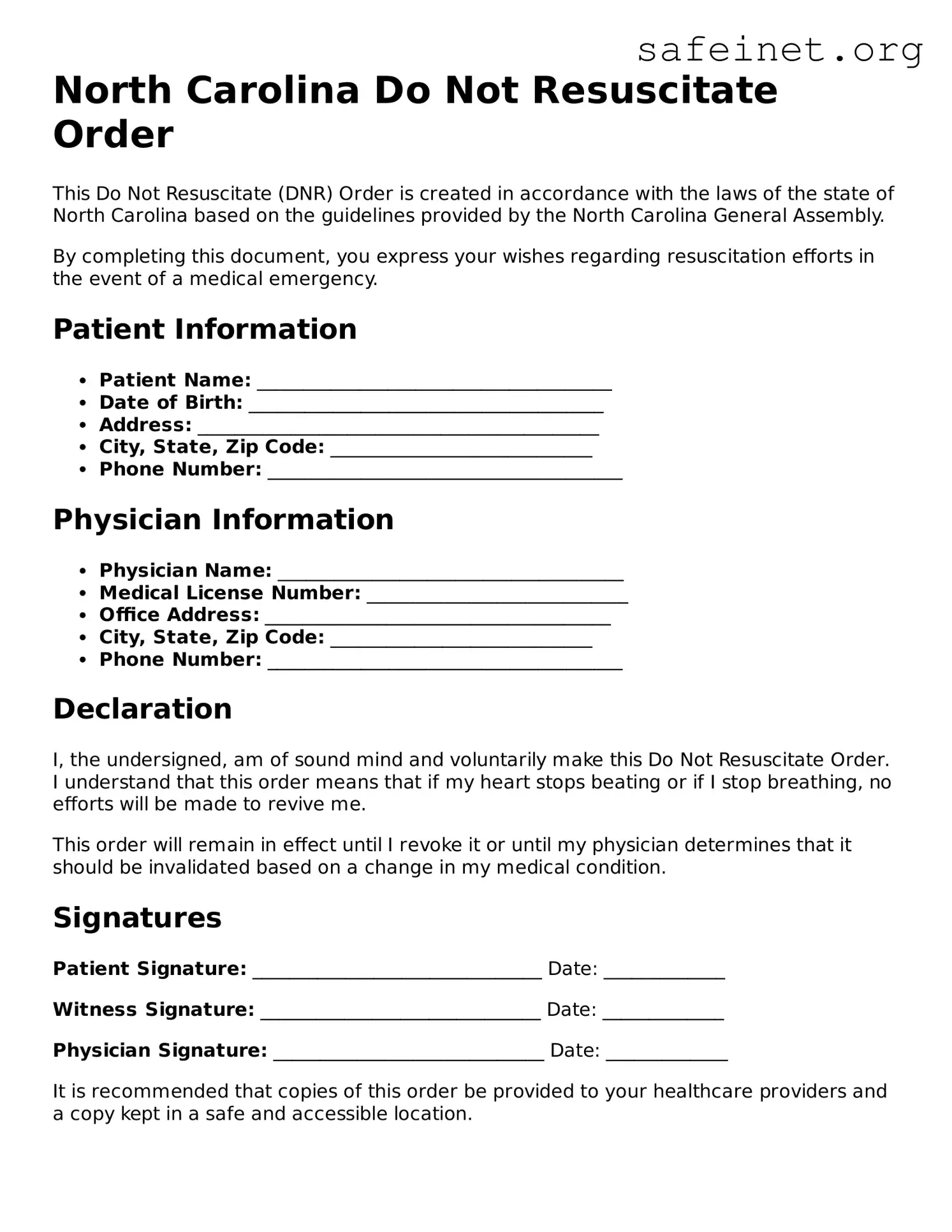The North Carolina Do Not Resuscitate Order (DNR) form closely resembles the Advance Directive, often referred to as a living will. Both documents express an individual's healthcare preferences in situations where they cannot communicate their wishes. While the DNR specifically addresses resuscitation efforts in case of cardiac arrest, the Advance Directive encompasses a broader range of medical decisions, including the management of life-sustaining treatments and interventions. Thus, while each document serves a distinct purpose, they work together to ensure that a patient’s healthcare preferences are honored in dire circumstances.
Another similar document is the Health Care Power of Attorney. Like the DNR and the Advance Directive, this form centers on healthcare decisions. However, the Health Care Power of Attorney designates an agent—the person who will make medical decisions on behalf of the individual if they are unable to do so. While a DNR outlines specific actions to take (or not take) concerning resuscitation, the Health Care Power of Attorney gives broader authority regarding all healthcare decisions, thus providing more flexibility for real-time medical choices.
The Physician Orders for Life-Sustaining Treatment (POLST) form shares similarities with the DNR, as both focus on the individual’s preferences regarding emergency medical interventions. The POLST is specifically designed for individuals with serious illnesses or frailty, transitioning the conversation from general end-of-life care to immediate medical orders. While a DNR order primarily indicates do-not-attempt-resuscitation, POLST also addresses other life-sustaining treatments and can provide more comprehensive care instructions. This makes it a valuable tool for ensuring that individuals receive medical treatment aligning with their personal values and health goals.
The Medical Orders for Life-Sustaining Treatment (MOLST) form is quite similar as well, particularly in its intent to communicate a patient's preferences for life-sustaining measures. Primarily utilized in certain states, MOLST incorporates elements similar to the POLST but allows for even more granularity in medical orders. Both the MOLST and DNR documents emphasize patient choice and ensure that healthcare providers understand what actions to take in medical emergencies. They are designed to be honored across various healthcare settings, bridging gaps in communication between patients, families, and healthcare providers.
The Directive to Physicians and Family or Surrogates, sometimes referred to as the Texas Directive, also bears similarities to the DNR. This document gives explicit instructions regarding treatment preferences and outlines the authority of healthcare proxies. While both documents aim to guide healthcare decisions and ensure that patient autonomy is respected, the Directive to Physicians provides a comprehensive framework that addresses various scenarios and treatments beyond resuscitation alone. Therefore, while a DNR focuses narrowly on resuscitation, the Directive allows for a more expansive approach to treatment preferences.
Finally, the Post-Mortem Directive, though slightly different in focus, parallels the DNR in allowing individuals to express wishes concerning their medical care. This document addresses the handling of one’s body after death, including preferences for organ donation and autopsy. While it does not directly influence resuscitation efforts, it ensures that an individual’s wishes are adhered to after they pass away. This highlights a continuum of patient autonomy, extending beyond the clinical setting and into posthumous matters, similar to how a DNR respects a patient's decisions about their end-of-life care.
